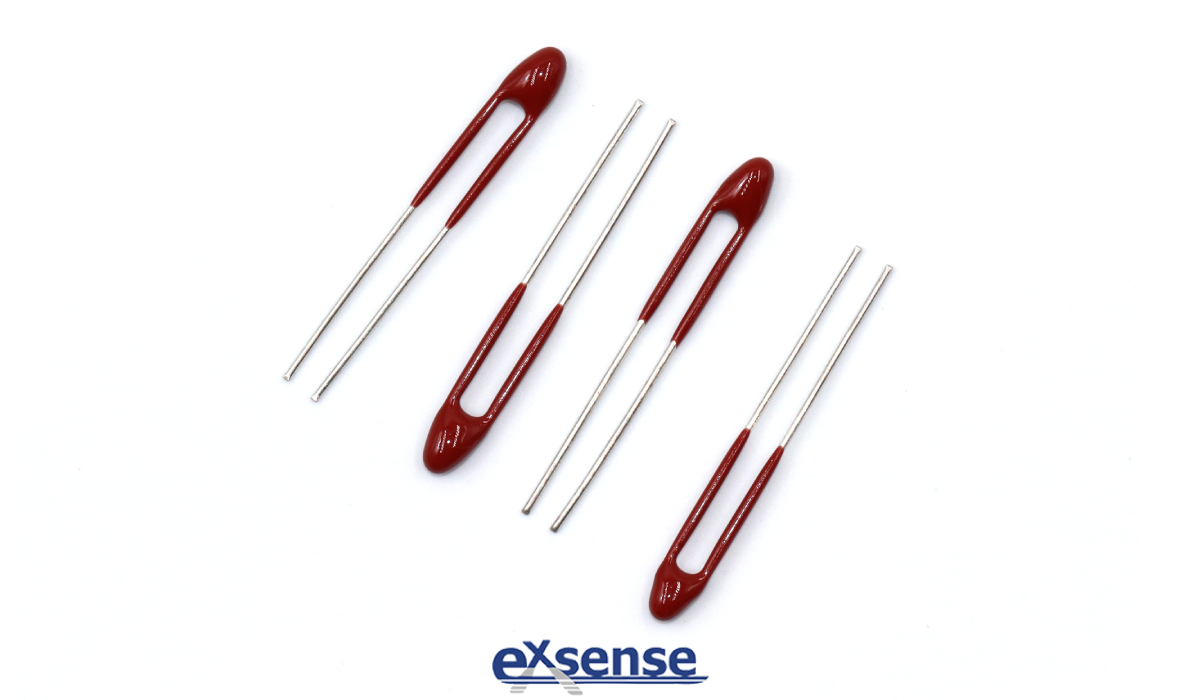Reliable High-temperature Resistant NTC Thermistor
Among the existing technologies, the common NTC thermistor have poor high-temperature resistance, which can lead to a series of adverse effects in most high temperature environments. For example, the epoxy resin will fall off and embrittle at a certain temperature point; When the temperature is too high, the volatile gas of epoxy resin will also erode the NTC chip, affecting its performance.
Today, let’s introduce a high-temperature resistant NTC thermistor, which is made up of sintered oxide mixtures containing rare earth metals with high temperature resistance, good stability and high reliability, and can be used in automobiles or products that need to be measured in high temperature environments.
The common NTC thermistor are sintered by metal oxides such as manganese, chromium, iron and copper, which are usually not suitable for high temperature applications. Due to these metal oxides are decomposed in high temperature environments; Their maximum use temperature is limited by the fact that this type of thermistor may change irreversibly even at lower temperatures. The high-temperature resistant NTC thermistor introduced today, is a thermistor composed of a sintered oxide material containing a mixture of Terbium Oxide and a material selected from the group consisting of Samarium Oxide and Ytterbium Oxide, which can be used to measure and adjust temperature in high temperature environments.
Up to now, most experiments have used pyrometer, metal resistor or thermocouple elements for temperature measurement and temperature control. However, the data obtained by the pyrometer at temperature measurement are relatively inaccurate, so it is almost impossible to use the pyrometer for temperature control precisely. Metal resistor has a low resistance temperature coefficient of resistance so that amplifier is typically required whenever metal resistor is utilized for temperature control. Finally, thermocouple element suitable for high temperature environment can only be produced from relatively high costing platinum metals.
In existing technologies, high-temperature resistant NTC thermistor that can be used at higher or high temperatures may be made from a mixture of rare earth metal oxides and Zirconium Oxide. For example, British patent specification No.874,882 suggests a thermistor comprised of a mixture of yttrium and zirconium oxide while German Offenlegungsschrift No.2,333,189 suggests a thermistor composed of a mixture of praseodymium and zirconium oxide. However, thermistor composed of such materials exhibit a varistor effect, i.e., the resistance values of such thermistor is dependent not only upon the temperature but also on the applied voltage.
"Zeitschrift fur Electrochemie‘ (Journal for Electro Chemistry) 1959, pages 269-274, suggests that the conductivity of rare earths increases with rising temperatures, however, no suggestions are made for incorporating rate earths or mixtures thereof in thermistor. Further, U.S. Pat. No. 4,010, 119 suggests a thermistor comprised of a mixture of neodymium oxide and samarium oxide while U.S. Pat. No. 4,010, 122 suggests a thermistor composed of a mixture of terbium oxide and erbium oxide. However, thermistor composed of such materials exhibit a relatively high specific resistance and thus can not be utilized at relatively low temperatures or over an extended operating temperature range.
The high-temperature resistant NTC thermistor introduced today, can be used in high temperature environments for temperature measurement and temperature control over a relatively large operating temperature range.This thermistor has a higher resistance coefficient and lower specific resistance, and does not exhibit a varistor effect or polarization phenomenon.
Next, let’s illustrate it with a simple making way. The initial mixture of Terbium Oxide (purity 99.9%) and Ytterbium Oxide (purity 99.9%) was prepared so that the mixture contained a terbium atom with a content of approximately 1000 cents. The mixture is dissolved in hydrochloric acid, while rare earths are routinely co-precipitated as oxalic acid salts. The precipitated oxalic acid salt is filtered out, roasted at a temperature of about 900 ℃, and then ground to produce substantially uniform oxide particles. For the production of thermistor, suitable adhesives are provided for calcined and ground-based oxidation mixtures, and beads are formed between two parallel clamping wires consisting of platinum or platinum alloys. It is then pre-dried and the thermistor beads are sintered within the temperature range of the 1550~1700℃ in the appropriate furnace containing the oxidation atmosphere. The resulting high temperature-resistant NTC thermistor is tested at high temperatures to obtain its specific resistance. When this high temperature-resistant NTC thermistor is used in an active environment, it is best to provide a protective coating or housing for the thermistor.
Next, let’s illustrate it with a simple making way. A starting mixture of terbium oxide (purity of 99.9%) and ytterbium oxide (purity of 99.9%) was prepared so that the mixture contained about 10 atom % of terbium. This mixture was dissolved in hydrochloric acid and the rare earths were then conventionally coprecipitated as oxalates. The precipitated oxalates were filtered off, calcinated at a temperature of about 900℃ and then finally ground to produce substantially uniform size oxide particles. For the production of a thermistor, the calcinated and ground oxide mixture was provided with a suitable bonding agent and formed into a bead between two parallelly clamped wires composed of platinum or a platinum alloy. This structure was then subjected to a preliminary drying and the thermistor bead was then sintered at temperatures in the range of about 1550 to 1700℃ in a suitable furnace containing an oxidizing atmosphere. The resultant high-temperature resistant NTC thermistor is subjected to a high temperature environment and the specific resistance thereof measured. When this high-temperature resistant NTC thermistor is utilized in a reactive environment, it is preferable to provide a protective coating or housing for the thermistor.














